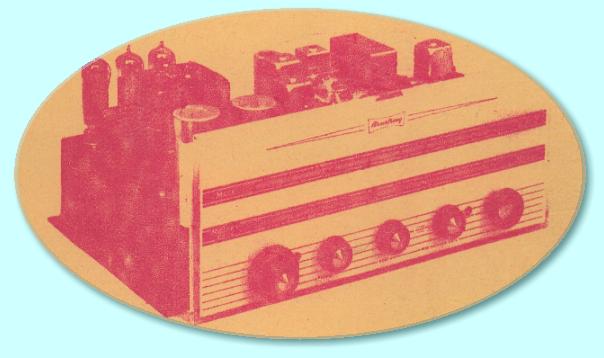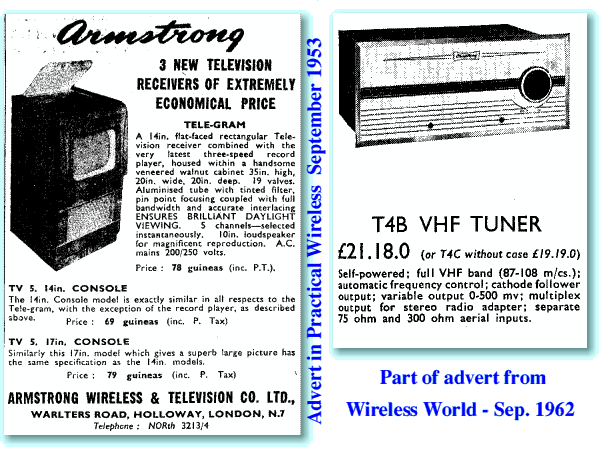


| Model Number | type | dates | power | o/p valves | bands |
| AF105 | mono am/fm tuner-amp | ? | ? | EL84 | vhf/mw/lw/2sw |
| AF208 | mono am/fm tuner-amp | c1960 | 5W | EL84 | vhf/mw |
| AW73 | all waveband radio | c1940 | 6W | 6V6 | sw/mw/lw |
| AW93 | all waveband radio | c1940 | 6W | 6V6 | sw/mw/lw |
| BS54 | mono bandspread radio | - | - | - | - |
| BS125 | mono bandspread radio | - | - | - | - |
| EXP53 | mono radio | - | - | - | sw/mw/lw |
| EXP73 | All waveband radio | c1950 | 8W | - | - |
| EXP119 | mono bandspread radio | - | - | - | 7sw/mw/lw |
| EXP125/3 | mono radio | c1950 | 15W | - | 3sw/mw/lw |
| FC38 | mono radio | 1953 | 8W | EL84 | sw/mw/lw |
| FC48 | mono radio | c1950 | 8W | EL84 | 2sw/mw/lw |
| FM56 | mono radio | ? | ? | ? | vhf/? |
| Jubilee Mk 2 | mono radio | c1960 | 8W | - | vhf/mw/lw |
| PABO | preamp bias oscillator | ? | - | - | - |
| PABO3 | preamp bias oscillator | ? | - | - | - |
| RF41 | mono radio | c1950 | 10W | - | sw/mw/lw |
| RF103/3 | mono tuner-amp | 1950 | ? | 6P25 | sw/mw/lw |
| RF104 | mono radio | c1950 | - | - | - |
| SS10 | superhet/TRF radio | c1947 | - | - | sw/mw/lw |
| ST3 | tuner | c1960 | - | - | lw/mw/vhf |
| Stereo 12 | stereo tuner-amplifier | c1952 | 8W | EL84 | vhf/mw/lw |
| Stereo 12 Mk 2 | stereo tuner-amplifier | c1954 | - | EL84 | vhf/mw/lw |
| Stereo 44 | stereo tuner-amplifier | c1951 | 4W | EL84 | mw/lw |
| Stereo 55 | stereo tuner-amplifier | c1952 | 5W | EL84 | vhf/mw |
| T4B | VHF tuner | c1960 | - | - | vhf |
| Tele-Gram | TV and record player | c1953 | 14 inch CRT | - | - |
| TV 5 | TV Console | c1953 | 14/17 inch CRTs | - | - |
| TV 15 | Television Chassis | c1952 | 12 inch CRT | - | - |
| TV 20 | Television Chassis | c1950 | 12 inch CRT | 21 valves | - |

